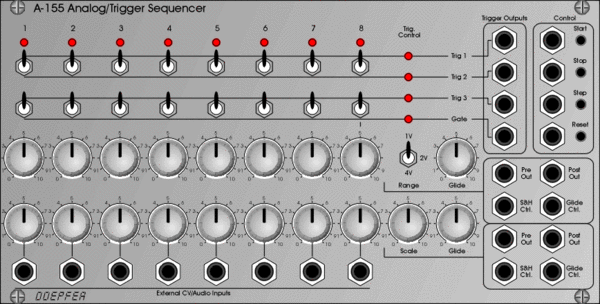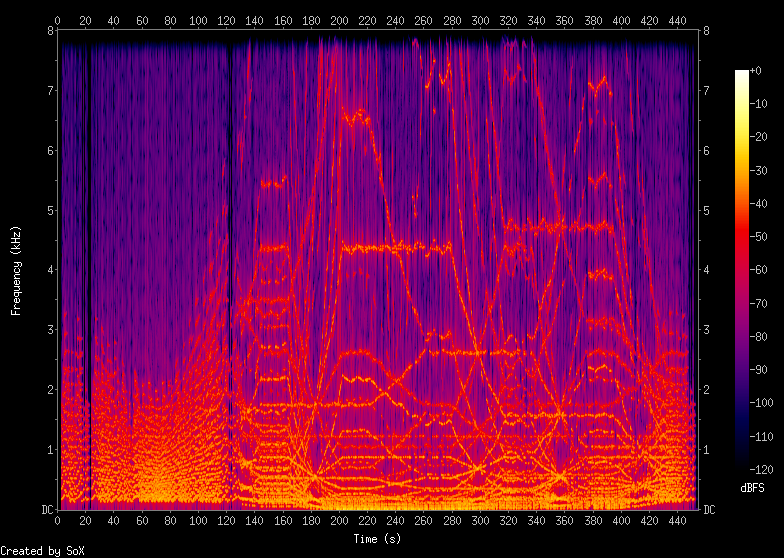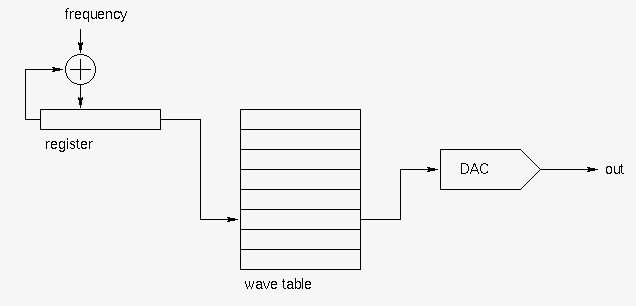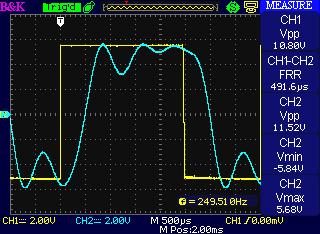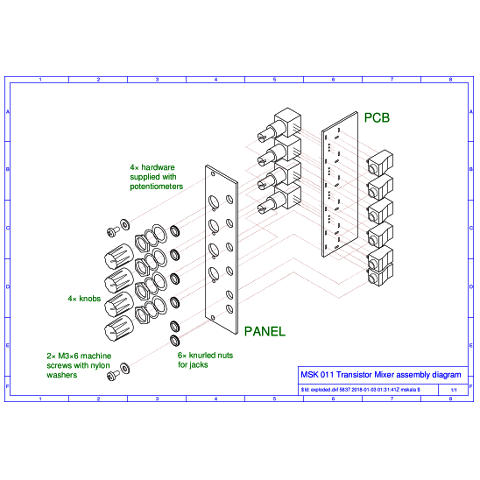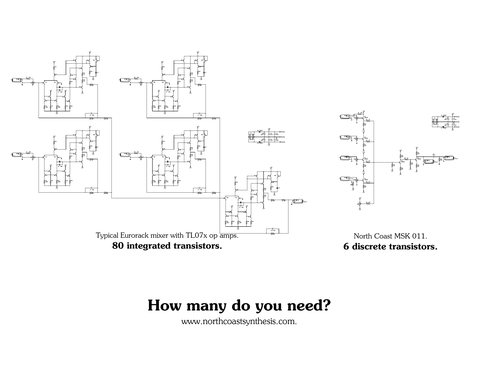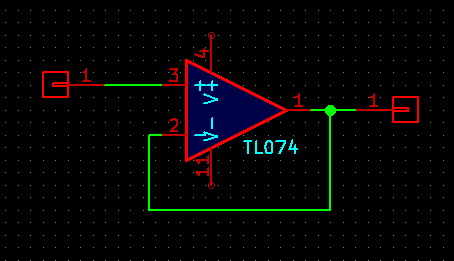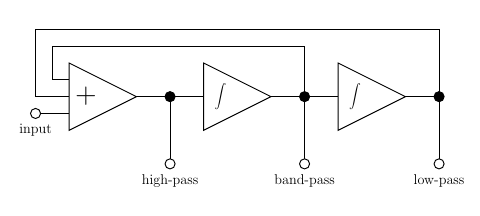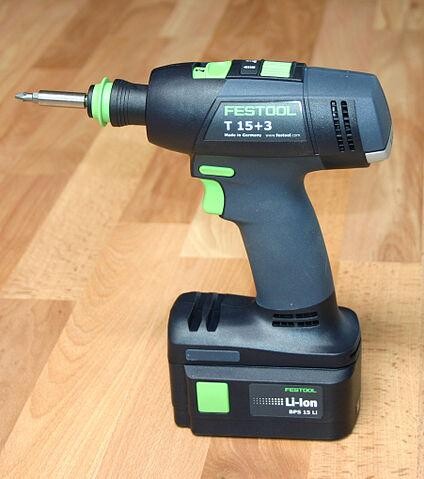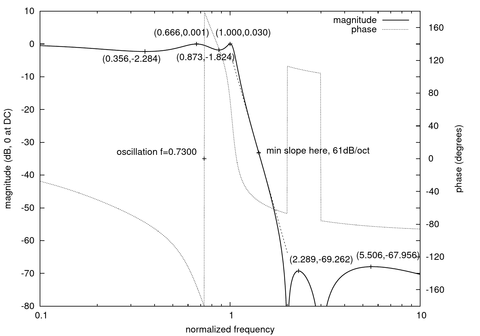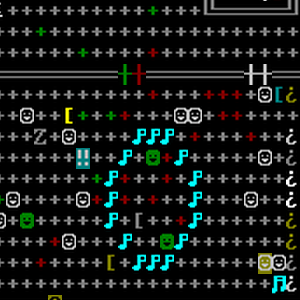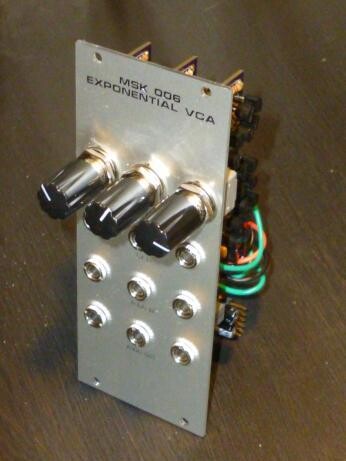Modular Synthesis Intro, part 12: Sequencing
This is Part 12 of a series that started with Part 1. READ MORE
Alternate harmony with additive synthesis
Much of musical harmony comes down to combining notes that share harmonics. Sounds produced by (some...) physical objects typically have consistent waveforms, where each wave is the same shape as the last. That is also typical of modular-synth oscillators; and its consequence is that the spectrum always consists of a sum of sine waves all at integer multiples called harmonics of one frequency called the fundamental. The proportions and phases of the different harmonics determine the shape of the waves, and those can vary a lot, but the general pattern of integer multiples is fixed. If you play a note like D with a fundamental frequency of 293.7 Hz, it will have its harmonics at 293.7 Hz, 587.4 Hz, 881.1 Hz, 1174.8 Hz, 1468.5 Hz, 1762.2 Hz, and so on. READ MORE
Modular synthesis intro, part 11: Digital oscillators
This is Part 11 of a series that started with Part 1. READ MORE
Frequency, latency, and uncertainty
Some wigglers want "fast" envelopes that will turn a signal on and off without any delay and without any perceptible clicking sound. Some wigglers want spectral effects, like frequency shift or vocoding, without any latency between the input and output. Some wigglers just want accurate pitch tracking of external inputs. All of these wigglers are doomed! None of those things can ever work perfectly. But the funny thing is that they're all doomed for the same reason. There is a fundamental principle that limits the performance of all these seemingly different things, and I'll try to explain the connection in this posting without resorting to any particularly complicated math. READ MORE
Modular synthesis intro, part 10: Analog oscillators
This is Part 10 of a series that started with Part 1. READ MORE
News, reviews, and demos
We're coming up to the end of the first quarter of 2018, and I'm happy to note that based on the current projection, it looks like the company will actually have a profit this quarter - probably about $10. (Edit: Well, not quite. The quarter ended about $6.50 in the red. Still the best quarter on record, though.) Even if sales continue to increase, it'll still take a long time to pay back the losses of previous quarters, and since I'm living on savings now with no real income since Fall 2016 and the company owes me personally a few tens of thousands of dollars, I'm conscious of needing to keep pushing for more sales at North Coast if I'm to stay in business at all, continue releasing new modules, and keep up activities like this Web log for which I don't actually get paid. よろしくお願いします, as we say in Japanese; I hope for your favour. READ MORE
Modular synthesis intro, part 9: Other filter designs
This is Part 9 of a series that started with Part 1. READ MORE
One minute op amp analysis
You can understand most op amp circuits with just three simple rules. READ MORE
Modular synthesis intro, part 8: State-variable filters
This is Part 8 in a series that started with Part 1. READ MORE
Voltage control modifications
There's a recurring thread that comes up again and again in SDIY fora, where someone asks how to "mod" an existing device that is not voltage-controlled to give it a CV input. Sometimes this question is asked in relation to a specific product, in which case there's some possibility of having an intelligent discussion; but quite often it's framed more generally, with the poster hoping that there will be just one single, simple procedure applicable to all (or at least many) non-voltage-controlled modules to make them voltage controlled. In this article I'll talk about some of the issues underlying that kind of request, and how CV "mods" can and can't be done on different kinds of circuits. READ MORE
A note on RSS
I saw in my Web hosting logs that someone visited this site and spent a significant amount of time using the site search and guessing URLs in an unsuccessful attempt to discover the RSS feed URL - which was linked on every single page, but at the time only via an icon which I guess they didn't recognize. So I edited the Web design to label it more clearly with words as well as the icon... and in so doing I found that in fact the RSS URL (actually Atom, but they're basically compatible) was wrong, pointing at Shopify's generic Web server instead of my store's. READ MORE
Modular synthesis intro, part 7: the Moog ladder filter
This is Part 7 in a series that started with Part 1. READ MORE
The Music of the Dwarves
Orid Oru, "The Universes of Forever": a world not much different from many others, whose most notable feature is a huge inland ocean connected to the outer waters that surround the world only through a small channel in the northwest. The western dwarves of Goden Tarmid "The Rope of Blades" have long followed a complicated prophecy requiring them to send an adventurer around the world, circling the ocean. It was they who built the bridge of Merchantwinds across the strait, making possible, in theory at least, an entirely land-based passage around the world. So far, nobody has actually completed the journey, because there are many dangers along the way. READ MORE
Modular synthesis intro, part 6: Voltage Controlled Amplifiers
This is Part 6 in a series that started with Part 1. READ MORE
